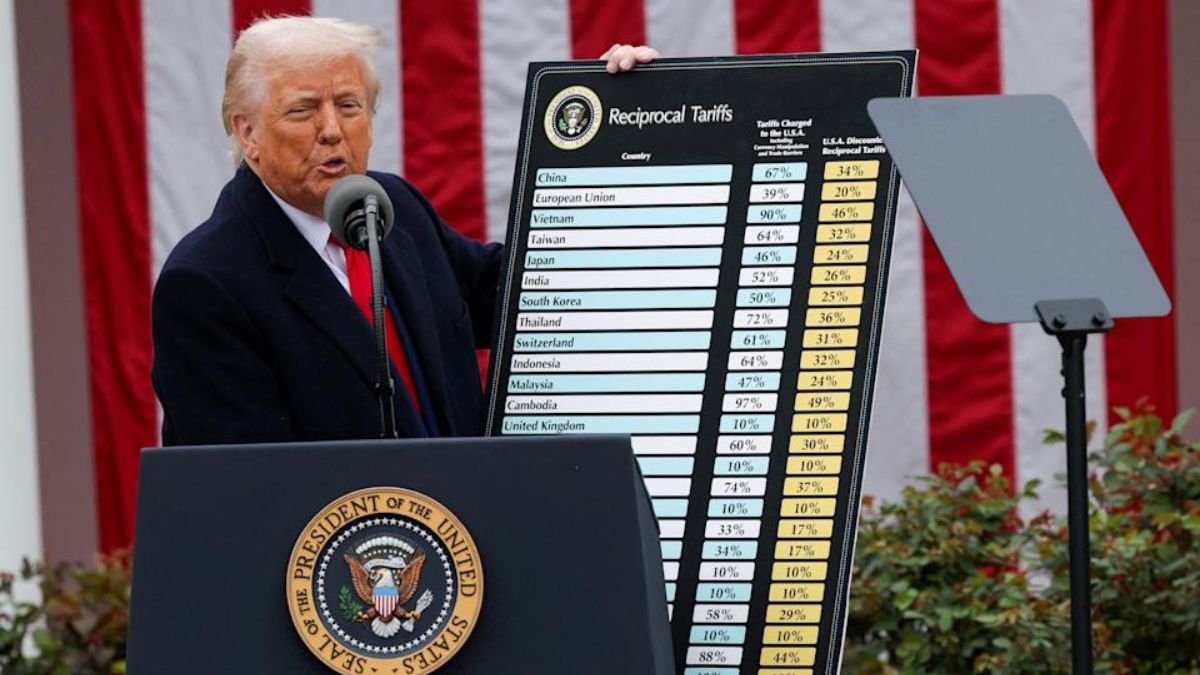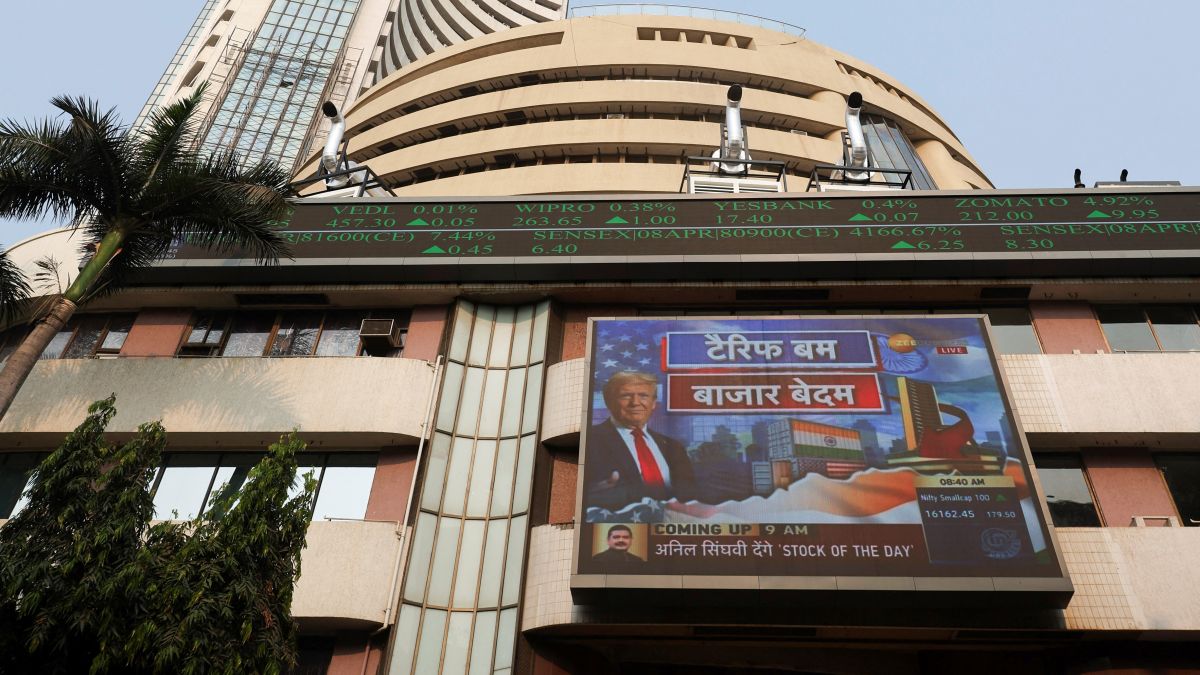US President Donald Trump may have pitched the rollout of tariffs on Wednesday as liberation from purported unfair trade practices, but the rollout had more theatrics than substance. That he may have scored a self-goal by pushing the United States towards a recession is a different fear altogether that has gripped economists.
Everything from the method used to calculate tariffs to places they have imposed has trigerred amusement.
For one, Trump has slapped tariffs on islands inhabited only by penguins and has slapped separate tariffs on overseas territories of the United Kingdom, France, and Australia,creating a situation where a country has multiple tariff rates.
ALSO READ: Trump’s tariff war could cost world $1.4 trillion, raise prices in US by 5%, finds analysis
With the way he has rolled out tariffs, Trump has also undone the very premise he set out with. Trump dubbed these tariffs as ‘reciprocal tariffs’, which meant that the United States would impose the same tariffs on a country’s products that a country imposes on US products. This would have involved the rollout of tariffs on a country-by-country, product-by-product basis. However, that’s not how Trump rolled out tariffs.
Instead of a country-by-country, product-by-product basis, Trump imposed 10 per cent blanket tariffs on all countries and then imposed higher tariffs on a select group of countries. As economists figured out the formula used by the administration, it became all too clear that there was no reciprocity.
Trump’s tariff formula negates basis of tariffs
The Trump administration had said that they would calculate tariff rates and non-tariff barriers imposed by each country and then set tariffs for that country.
However, that is now what they finally did. Instead, they used a very simplistic, and incorrect, formula to set tariffs that led to some very comical situations.
The Trump administration simply took a country’s goods exports to the United States, divided it by the country’s trade balance with the United States, and then divided the resultant number by two, according to MarketWatch.
Economics writer James Surowiecki noted in a post on X that the Trump administration did not even factor in complete balance of trade between the United States and a country. They just calculated goods trade and completely excluded services.
In case the final figure from the formula came to be less than 10, or in case the United States has a goods trade surplus country with a country, Trump simply slapped 10 per cent tariffs on the country instead of the final figure (less than 10) that came from the formula, according to Surowiecki.
No reciprocity in tariffs
The usage of such a flawed formula means that there is no reciprocity in Trump’s tariffs. Even countries with which the United States has trade surplus now face tariffs.
In the most bizarre case, the United States slapped 17 per cent tariffs on Israel when the country imposes 0 per cent tariffs on the United States!
Earlier this week, Israeli Prime Minister Benjamin Netanyahu had ordered the removal of all tariffs on US goods.
Will Trump make penguins pay?
Trump wants the world to pay for purportedly ripping off the United States and he has no intention to spare anyone — not even penguins in remote Antarctic islands.
Trump has slapped Heard Island and McDonald Islands, the Antarctic islands that come under Australian rule, with 10 per cent tariffs. The only issue is that there are no humans on the islands and there is no trade with humans on the island. The only residents on the islands are penguins.
Australian Prime Minister Anthony Albanese had the best reaction to the situation: “Nowhere on Earth is safe.”
Trump tariffs US soldiers
Trump has imposed 10 per cent tariffs on British Indian Overseas Territory (BIOT), which comprise the Chagos Islands on the Indian Ocean.
The only residents there are US and British personnel who mostly live and work in the island of the Diego Garcia where the United Kingdom and United States jointly operate a military base. This means that Trump has imposed tariffs on US soldiers.
Multiple tariffs on same country
In some cases, Trump has slapped multiple tariffs on a same country.
Trump has slapped 20 per cent tariffs on France as part of the European Union (EU) but has slapped 37 per cent tariffs on French island of Reunion. Similarly, Trump has slapped 10 per cent tariff on Australia but 29 per cent tariffs on overseas Australian territory of Norfolk Island.
Taiwan may be happy even with high tariffs
Trump has slapped Taiwan with some of the highest tariffs at 32 per cent. However, Taiwanese may still be happy as Trump has essentially treated them as independent of China.
The self-ruled island of Taiwan considers itself as a sovereign state, but few countries in the world recognise it as a sovereign nation. China claims that Taiwan is a breakaway region and is committed to its merger with the mainland. Most of the countries of the world, including the United States, accept ‘One China Policy’ that identifies Taiwan as a part of China controlled by Beijing.
In this context, the de facto treatment of Taiwan as a nation may be something that its people may like.
Moreover, Trump’s tariffs have exempted semiconductors. The self-ruled island is the world leader in semiconductor production and semiconductors and related goods form a good chunk of US-Taiwan trade. This means that, despite the 32 per cent, the real effect on the self-ruled island would be cushioned.


)
)
)
)
)
)
)
)
)



